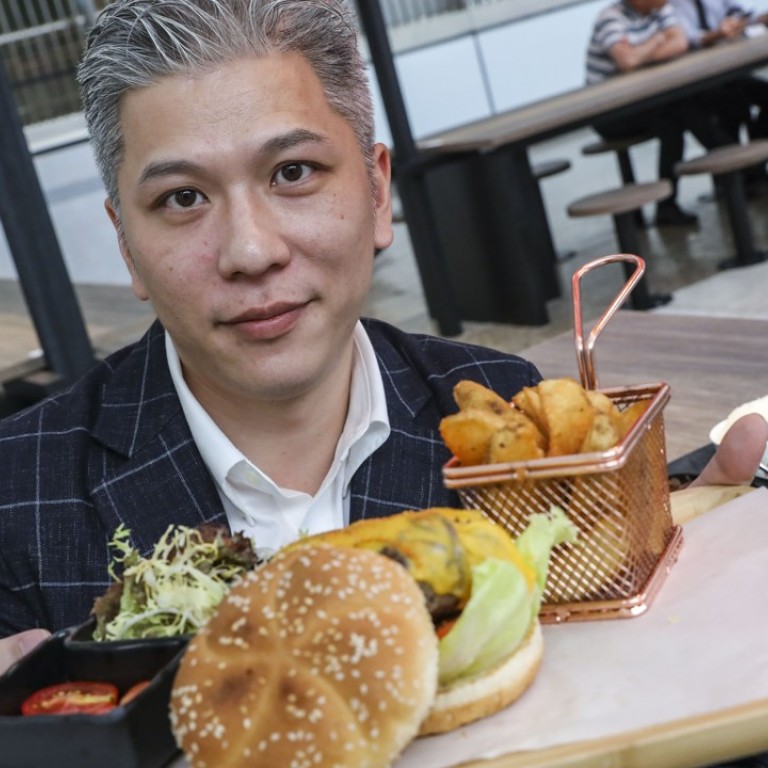
Owner of HK$35 million food court at West Kowloon station in Hong Kong hungry to prove meals can be fast and good
Restaurant chain operating at vast new high-speed railway terminus hopes for vibrant dining scene as travellers and station visitors pour in
Food options at train stations and airports are normally limited to anaemic-looking sandwiches, burgers, and an assortment of fast food. The man in charge of feeding passengers at West Kowloon station wants to change all that.
More than HK$35 million (US$4.4 million) has been spent on the food court at the cross-border high-speed rail link’s hub in Hong Kong, and despite low passenger numbers the firm running the “Foodium” expects to make more than HK$3.6 million per month.
Kennedy Yick, operations director of Future Bright Restaurant (Hong Kong), believed his firm would cash in while turning the eating area into a vibrant dining scene for high-quality cuisine and a unique mix of delicacies.
Since the Guangzhou-Shenzhen-Hong Kong Express Rail Link opened on September 23, the 400,000 sq ft West Kowloon terminus has become an attraction not only for tourists, but also for locals keen to explore the station for food, shopping and sightseeing.
The green plaza outside the premises, and its rooftop garden featuring a sightseeing deck affording a panoramic view of Victoria Harbour, have also become popular.
“We need to stress that Foodium is nothing like an ordinary food court that provides fast food and ready-made meals,” Yick said as he dished out Sichuan chilli poached beef.
“We aim to turn Foodium into a high-end food court that impresses customers with good and sophisticated food.”
Record numbers give Hong Kong leader hope of bright future for high-speed rail
Located under the arched glass ceilings in the arrival hall on level B2, the 18,000 sq ft Foodium, which can sit 350 people, is the first food court in Hong Kong run by the restaurant chain.
“Our group has tried to expand its business in Hong Kong,” Yick said. “We want Foodium at West Kowloon to be the cornerstone of our food court business.”
Offering seven restaurant brands and a menu of 28 dishes, the gastronomic mix at Foodium includes burgers, Chinese noodles, Japanese and Southeast Asian cuisine, classic Hong Kong fare, and even Sichuan chilli delicacies. The brands include Bari-Uma, Hipster Burger, Good Fortune Noodle, Café Lung Shing and Sichuan Cuisine.
60,000 mainlanders enter Hong Kong on high-speed rail – in just one day
With meals priced at between HK$52 and HK$93 per set, Yick said the menus would be changed regularly to give customers a sense of freshness about their offerings.

Naturally, the group’s ambition came with a price tag. Yick estimated more than HK$35 million had been spent just for the start-up investment, not including the wages of some 80 staff. But he was confident Foodium could make a profit riding on the railway’s expected passenger growth.
We hope to strike a delicate balance between efficiency and good food
“We choose the West Kowloon station as our testing ground as we are confident that it will create a boom for business activities related to it,” Yick said. “When people get used to the convenience of this service the patronage will continue to grow.”
“We hope to attract a flow of 1,500 customers during weekdays, and more than 2,000 per day during holidays or weekends. We estimate to break even in three years’ time. So far, we’re close to achieving this target for the first week.”
If numbers remain solid, Foodium is expected to bring in more than HK$3.6 million per month.
Yet Yick admitted the first few days of operation saw computer system glitches as well as a slow workflow that left some customers waiting up to half an hour for their food.
“The logistics took longer than I expected, while some staff had not yet familiarised themselves with the system,” he recalled. “Now we have made some improvements and the waiting time has been cut to about 10 minutes.
“We know that passengers are usually in a rush so they need food to be served very quickly. We hope to strike a delicate balance between efficiency and good food.”

